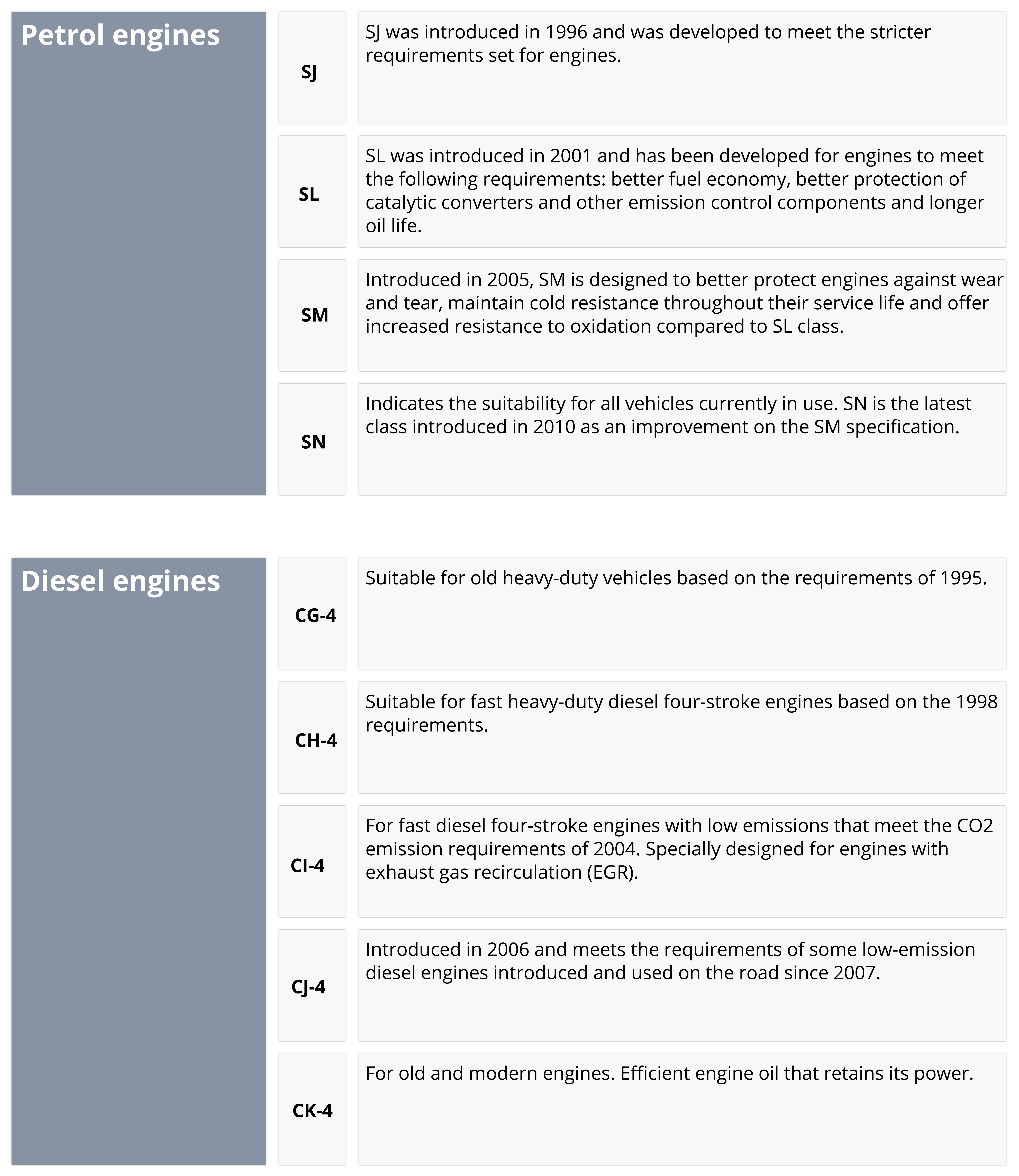What do the different specifications say about engine oil
There are many different specifications for oil. These are shown on the packaging of the oil, but also in the service manual of the vehicle and machine. These specifications can also be requested from the manufacturer. Oil specifications are indicated with terms such as ACEA and API. In the article What to look out for when buying engine oil we already looked at the importance of the right viscosity and the types of oil. In this article we will discuss the ACEA and API specifications and the importance of additives in engine oil.
The ACEA specification
An important specification is ACEA. It consists of one letter and one number. With this specification the following distinction is made:
- Petrol Engines (A)
- Light Diesel Engines (B)
- Diesel Engines with a Diesel Particle Filter (C)
- Heavy Duty Diesel Engines (E)
Behind this is a number, which indicates the quality of the oil.
SAPS (Sulphated Ash, Phosphorus and Sulphur) is a term widely used. A motor oil with low-SAPS is an oil with a low proportion of sulphate ash, phosphorus and sulphur.
HTHS (High Temperature, High Shear) viscosity is also a term widely used nowadays. Thinner oil provides less resistance and therefore lower fuel consumption. Thinner fuel-saving oils have a low HTHS value.
 The ACEA specification
The ACEA specificationThe ACEA specification, however, is only a basis. There are other standards and specifications on top of that and also those of the car manufacturer.
The API specification
API indicates the quality and suitability of the oil and is represented by two letters, with the second letter indicating the quality.
- The 'S' includes the oil categories for petrol engines
- The letter 'C' includes the oil categories for diesel engines
 The API specification
The API specificationAdditives
On the packaging of the motor oil you will probably also find additives. Why are additives added to engine oils?
Additives are mixed with base oils for the following two reasons:
- to give the waste oil properties that are necessary for maintenance, but are not present in the base oil;
- to maintain the function of the final product for a long time, even at maximum use.
The quality of additives is very important. Base oil cannot clean, cannot keep dirt particles floating, cannot prevent oil from foaming and cannot protect parts from wear and tear. That's why engine oil consists of around 65% to 80% base oil and the rest of additives and other parts.
Because of the antioxidants added to the oil, oil only has to be replaced after more than 500 hours. This used to be after 200 hours.
Why are antioxidants added to engine oil?
High temperatures and oxygen lead to oxidation of the oil, which darkens it, makes it acidic and increases its viscosity. Antioxidants keep the oil young and slow down the deterioration of the oil when used. The additives therefore prevent or reduce oxidative degradation.
So it is important to look at different specifications when buying engine oil. One last tip: Check the oil level regularly and make sure you always have the right spare engine oil with you. Want to know more about our engine oils? Take a look at our webshop, contact your account manager or contact us at knowledgecenter@kramp.com.

